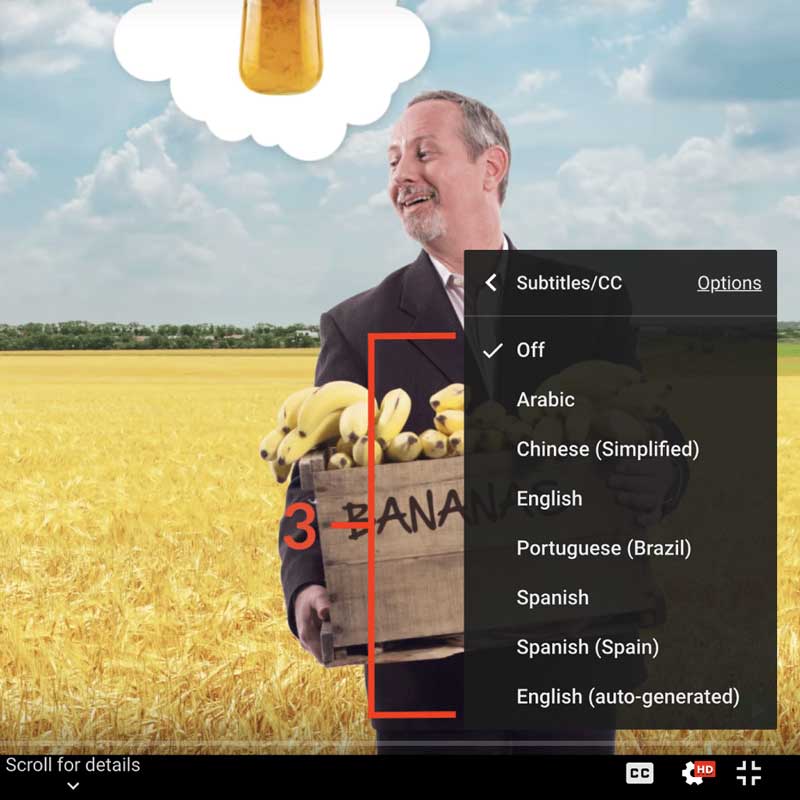Keynesian Business Cycle Theory
Course Outline
Keynesian Business Cycle Theory
This is "Game of Theories: The Keynesians" from our Principles of Economics: Macroeconomics course.
One point of contention among economists is the causes of business cycles and recessions. And if you disagree on the causes, chances are that you disagree on the solutions.
In this video series, we’re going to explore some of the major business cycle theories – Keynesian, Monetarist, Real Business Cycle, and Austrian – and what their proponents think we ought to do about recessions. In the final video, we’ll take a look at how all four can be applied to the recent Great Recession.
First up, let’s explore the Keynesian theory. Keynesian economics is so named after British economist John Maynard Keynes (1883-1946). Keynes is well-known for his treatise The General Theory of Employment, Interest, and Money, which helped shaped modern macroeconomics. The key component of the Keynesian theory is aggregate demand and the assumption that nominal wages are sticky.
Recessions are unpleasant experiences. We all want to get out of them as quickly as possible. So what would a Keynesian do?
Keynesians tend to favor activist fiscal policy and monetary policy. In other words, they want governments to spend more (think deficits and public works programs) and grow the money supply while lowering interest rates. The idea is that the government is doing everything it can to stimulate aggregate demand.
We’ll cover some problems associated with Keynesian theory in this video, too, and take a deeper dive into the AD-AS model.
Teacher Resources
Transcript
Business cycles and recessions are some of the worst things that can happen to economies. They mean lower output and higher unemployment and more human misery. No, in macroeconomics the causes of business cycles—that's a contentious topic, and it involves at least four major schools of thought: the Keynesians, the monetarists, the real business cycle theorists and finally, the Austrians. And if you disagree on the causes of business cycles, odds are you'll also disagree on the proper remedies. In this series of videos we’re going to dive into each major business cycle theory and then use them all to better understand the Great Recession of 2008.
Let's start with the Keynesians. Keynesian economics is named after John Maynard Keynes, a British economist who, in1936, wrote a very famous book called the General Theory of Employment Interest and Money. In Keynesian economics there's one key idea and it's called an aggregate demand. So this is very different from the doctrine of real business cycle theory where the key problem is supply. Now, if you understand this idea of aggregate demand you'll see as we get to, why Keynesians tend to favor activist monetary and fiscal policy. But first, let's work through aggregate demand just a bit.
Let's break it down into its component parts, “C” plus “I” plus “G” plus “net exports.” That's consumption plus investment plus government spending plus how much we're selling abroad to other countries on net. Those pieces of the puzzle—that's how much flow of expenditure our aggregate demand there is to sustain labor hires in a given period. That is what in the Keynesian model keeps people at work.
Now, there's a key assumption here. In the Keynesian model, typically, nominal wages are sticky. Think of a wage as just another price. It's the price of labor. In a typical market if demand falls, then the price falls and the market clears. If that were true in the labor market, a drop in aggregate demand would mean wage cuts not people losing jobs, but wages are unlike many other prices. They don't always adjust so quickly hence we say they are sticky. Why is that? Well, there may be a long term contract, there may be a law such as the minimum wage law or sometimes it's just worker morale. So how does that work then?
Well, if the flow of aggregate demand expenditure into an economy slows down because wages cannot be cut, well, then workers have to be laid off and that will lower the flow of aggregate demand expenditure all the more because there's lower employment, lower production, less being consumed, less being invested. The key example here—it really is the Great Depression in the 1930s.
Starting in 1929 a lot of American banks failed. Depositors lost their money—this was before governmental guarantees—the money supply fell by about a third and the stock market crashed so there was less consumer spending and less investment. This led to a Great Depression and high levels of unemployment. More recently the Great Recession of 2008 also had a significant Keynesian element. We're gonna cover that in a separate video.
Keep in mind in a typical Keynesian scenario if consumption and investment are falling, usually government spending is going to end up falling as well because there's less revenue being produced in the economy, less tax revenue. And unless governments really borrow a lot, well, that's going to hurt government's ability to spend. That will be an additional negative shock to aggregate demand.
So graphically, in a simple aggregate demand-aggregate supply model, what does this look like? It's pretty straightforward. Take the aggregate demand curve and shift that back and to the left and you will see pretty simply that output goes down in this model. Also in this setting there may be some second-order effects. The aggregate supply curve may end up shifting back and to the left as well. For instance, imagine some laid-off workers—they end up demoralized or they lose their workplace contacts. In the longer run those people are probably going to be less productive.
What are the potential remedies here? Well, Keynesians tend to favor activist monetary and fiscal policies. Central banks should expand the money supply to help maintain that flow of nominal expenditure. They should lower interest rates and have easy conditions for credit. Keynesians also tend to favor a lot of government deficit spending. That is, governments should spend more, start new Public Works programs, try to put people to work and fund those programs by borrowing money even if the revenue isn't there from the economy right now. Again, the government is doing everything possible to restore that flow of aggregate demand.
So what are some of the problems in Keynesian theory? First, Keynesian economics doesn't always explain why aggregate demand fell in the first place. In this sense Keynesian economics may rely on some other mechanisms. Furthermore, sometimes what Keynesians call aggregate demand problems—well yes, they may be aggregate demand problems on the surface, but beneath that there's some deeper maybe hidden sectoral problem in the economy or slow growth or productivity is the actual problem. So there's some deeper malady and the weak aggregate demand is just a kind of symptom. So just jacking up aggregate demand—even if it's a good short-run protection—it may not always be the best way of solving your problem.
Second, many economists believe that actually monetary policy usually is enough to stabilize the flow of a nominal expenditure. If that's the case, Keynesianism, in fact, will evolve into another doctrine called monetarism. We're gonna cover that in a separate video.
Keynesians also tend to have a lot of faith in governance ability to time and target fiscal policy. But will government spend that money quickly enough? Will government actually succeed in hiring the unemployed workers? Those are all open questions.
Another problem—Keynesian economics predicts that you either have high unemployment or high inflation, but not both at the same time. During America's downturn of the late 1970s, there was a kind of stagflation—high inflation and high unemployment together. That wasn't what the Keynesians had predicted and during those years a lot of economists actually turned away from Keynesian ways of thinking.
There's also the public choice critique of Keynesian economics. The Keynesian recipe is to run higher deficits and recessions, but in good times to have a balanced budget or even a surplus. But a lot of governments don't do that, they like having the deficits all the time. So it could be there's an asymmetry built into the Keynesian system, where over time you get too many deficits and too much debt and perhaps eventually a fiscal crisis.
In sum, Keynesian economics is really important. It's central to the modern understanding of macroeconomics. That said, there are also some significant limitations to Keynesian ways of understanding the world.
Subtitles
Thanks to our awesome community of subtitle contributors, individual videos in this course might have additional languages. More info below on how to see which languages are available (and how to contribute more!).
How to turn on captions and select a language:
- Click the settings icon (⚙) at the bottom of the video screen.
- Click Subtitles/CC.
- Select a language.


Contribute Translations!
Join the team and help us provide world-class economics education to everyone, everywhere for free! You can also reach out to us at [email protected] for more info.
Submit subtitles
Accessibility
We aim to make our content accessible to users around the world with varying needs and circumstances.
Currently we provide:
- A website built to the W3C Web Accessibility standards
- Subtitles and transcripts for our most popular content
- Video files for download
Are we missing something? Please let us know at [email protected]
Creative Commons

This work is licensed under a Creative Commons Attribution-NoDerivatives 4.0 International License.
The third party material as seen in this video is subject to third party copyright and is used here pursuant
to the fair use doctrine as stipulated in Section 107 of the Copyright Act. We grant no rights and make no
warranties with regard to the third party material depicted in the video and your use of this video may
require additional clearances and licenses. We advise consulting with clearance counsel before relying
on the fair use doctrine.

